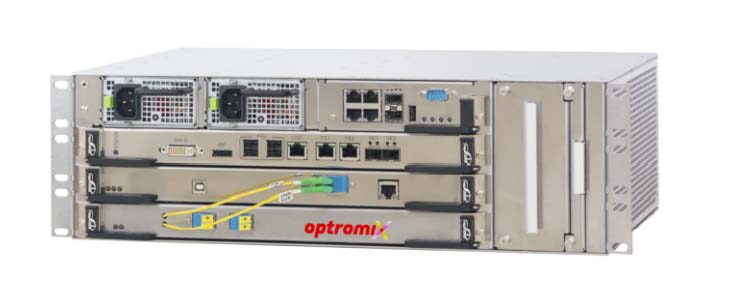The development of modern technology and an ever-increasing need for larger volumes of production drive the optical fiber technologies forward towards more precise measurement. Optical fiber technology has been rapidly developing for the past 30 years and now approaches the theoretical limits in terms of attenuation and precision manufacturing. The refinements have been taken advantage of in many non-transmission applications, where optical fiber sensing has come to the forefront of numerous industries and applications.
There are numerous embodiments of fiber optic technologies in modern industries, that include distributed temperature sensors, FBG strain sensors, FBG strain sensors, FBG pressure sensors, FBG interrogators, FBG multiplexers, etc. One of them – Distributed Acoustic Sensing (DAS) – provides near real-time measurements by using optical fiber by taking advantage of its low attenuation and long reach. The dielectric nature of distributed acoustic sensing and its immunity to radiofrequency and electromagnetic interference also present an important benefit of DAS to multiple applications.
The technology behind distributed acoustic sensing relies on coupling coherent laser energy pulses into an optical fiber and analyzing naturally-occurring Rayleigh backscatter. As light travels from the input to the distal end, it interacts with fiber, which causes a small amount of light to backscatter. The light that returns to the input end is detected and analyzed. Acoustic waves interact with the material that constitutes the fiber create changes in the refractive index. The changes in the refractive index have an effect on the backscatter characteristics that become detectable for the system. The time-domain techniques are then used to determine the location of the event, which provides fully distributed sensing with a resolution of 1 meter or less.
Distributed acoustic sensing has been found useful and necessary for many different applications, some of which include:
- Oil and gas monitoring;
- Perimeter security;
- Wells monitoring;
- Powerlines monitoring.
Optromix is a fast-growing vendor of fiber Bragg grating (FBG) products line: fiber Bragg grating sensors, FBG interrogators, and multiplexers, Distributed Temperature Sensing (DTS) systems. We create and supply a broad variety of top-notch fiber optic solutions for the monitoring of various facilities all over the world.
We provide a distributed acoustic sensing system that is much less expensive than other analogous systems present on the market. If you are interested in Optromix distributed acoustic sensing system, please contact us at info@optromix.com





